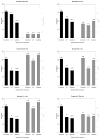A phase I/II seamless dose escalation/expansion with adaptive randomization scheme (SEARS)
- PMID: 24137041
- PMCID: PMC4281526
- DOI: 10.1177/1740774513500081
A phase I/II seamless dose escalation/expansion with adaptive randomization scheme (SEARS)
Abstract
Background: Standard drug development conducts phase I dose finding and phase II dose expansion sequentially and separately. Information between the two phases is rarely shared. Administratively, such a sequential process is time-consuming and burdensome.
Purpose: We propose seamless dose escalation/expansion with adaptive randomization scheme (SEARS), a seamless design that combines phase I dose escalation based on toxicity with phase II dose expansion and dose comparison based on efficacy. SEARS allows extension from phase I to phase II under one design with no gap in between and employs a dynamic and parallel procedure involving simultaneous dose escalation, dose graduation, and adaptive randomization.
Methods: SEARS integrates three components into a seamless scheme. Specifically, in phase I, SEARS applies the modified toxicity probability interval (mTPI) method to monitor dose escalation based on toxicity outcome. Doses that show promising efficacy and safety are immediately graduated from phase I and placed to a phase II stage in which patients are adaptively randomized based on efficacy outcome. Phase I dose escalation, dose graduation, and phase II adaptive randomization proceed simultaneously throughout the entire trial.
Results: Examples are given comparing SEARS with two other designs, in which superior performance of SEARS is demonstrated. An important and promising finding is that SEARS reduces sample sizes without losing power. R program and demo slides of SEARS can be obtained at http://health.bsd.uchicago.edu/yji/soft.html
Limitation: We assume that the binary efficacy and toxicity response can be measured in the same time frame. This is often achievable with surrogate efficacy markers in practice.
Figures



Similar articles
-
A Bayesian adaptive design for multi-dose, randomized, placebo-controlled phase I/II trials.Contemp Clin Trials. 2012 Jul;33(4):739-48. doi: 10.1016/j.cct.2012.03.001. Epub 2012 Mar 9. Contemp Clin Trials. 2012. PMID: 22426247
-
Sequential or combined designs for Phase I/II clinical trials? A simulation study.Clin Trials. 2019 Dec;16(6):635-644. doi: 10.1177/1740774519872702. Epub 2019 Sep 20. Clin Trials. 2019. PMID: 31538815
-
A novel Bayesian seamless phase I/II design.PLoS One. 2013 Sep 4;8(9):e73060. doi: 10.1371/journal.pone.0073060. eCollection 2013. PLoS One. 2013. PMID: 24023809 Free PMC article.
-
Design considerations for phase I/II dose finding clinical trials in Immuno-oncology and cell therapy.Contemp Clin Trials. 2020 Sep;96:106083. doi: 10.1016/j.cct.2020.106083. Epub 2020 Jul 11. Contemp Clin Trials. 2020. PMID: 32659438 Review.
-
Methodologic guidelines for the design of high-dose chemotherapy regimens.Biol Blood Marrow Transplant. 2001;7(8):414-32. doi: 10.1016/s1083-8791(01)80009-4. Biol Blood Marrow Transplant. 2001. PMID: 11569887 Review.
Cited by
-
Extensions of the mTPI and TEQR designs to include non-monotone efficacy in addition to toxicity for optimal dose determination for early phase immunotherapy oncology trials.Contemp Clin Trials Commun. 2018 Jan 31;10:62-76. doi: 10.1016/j.conctc.2018.01.006. eCollection 2018 Jun. Contemp Clin Trials Commun. 2018. PMID: 29696160 Free PMC article.
-
A modular framework for early-phase seamless oncology trials.Clin Trials. 2021 Jun;18(3):303-313. doi: 10.1177/1740774520981939. Epub 2021 Jan 21. Clin Trials. 2021. PMID: 33478274 Free PMC article.
-
The continual reassessment method for multiple toxicity grades: a bayesian model selection approach.PLoS One. 2014 May 29;9(5):e98147. doi: 10.1371/journal.pone.0098147. eCollection 2014. PLoS One. 2014. PMID: 24875783 Free PMC article.
-
Quality improvement and practice-based research in neurology using the electronic medical record.Neurol Clin Pract. 2015 Oct;5(5):419-429. doi: 10.1212/CPJ.0000000000000176. Neurol Clin Pract. 2015. PMID: 26576324 Free PMC article.
-
Overall success rate of a safe and efficacious drug: Results using six phase 1 designs, each followed by standard phase 2 and 3 designs.Contemp Clin Trials Commun. 2018 Aug 24;12:40-50. doi: 10.1016/j.conctc.2018.08.010. eCollection 2018 Dec. Contemp Clin Trials Commun. 2018. PMID: 30225393 Free PMC article.
References
-
- Braun TM. The bivariate continual reassessment method: extending the CRM to phase I trials of two competing outcomes. ContrClinTrials. 2002;23:240–256. - PubMed
-
- Thall P, Cook J. Dose-finding based on Efficacy-Toxicity tradeoffs. Biometrics. 2004;60:683–693. - PubMed
-
- Bekele B, Shen Y. A Bayesian approach to jointlly modeling toxicity and biomarker expression in a phase I/II dose-finding trial. Biometrics. 2005;61:343–354. - PubMed
-
- Yin G, Li Y, Ji Y. Bayesian dose-finding in phase I/II dose-finding trials using toxicity and efficacy odds ratios. Biometrics. 2006;62:777–787. - PubMed
-
- Zhang W, Sargent D, Mandreka S. An adaptive dose-finding design incorporating both toxicity and efficacy. Stat Med. 2006;25:2365–2383. - PubMed
Publication types
MeSH terms
Grants and funding
LinkOut - more resources
Full Text Sources
Other Literature Sources
Miscellaneous

